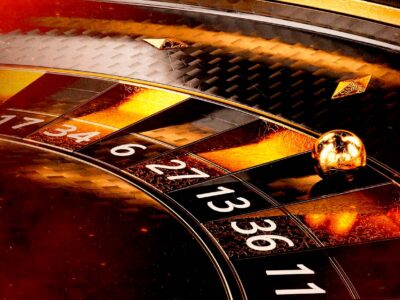Not everyone realizes the standard deck of 52 cards with which poker is normally played wasn’t always “standard.”
Poker was first introduced in the early 19th century in the United States, a card game employing elements from various precursor games mostly played in Europe. Those early games usually involved a deck of just 20 cards — just the aces, kings, queens, jacks, and tens. (Makes you think of 6+ hold’em a little, doesn’t it?)
Those first games only involved a single dealing of five-card hands with no chance for discarding or drawing. Along the way appeared other decks of 36 cards, of 40 cards, and other amounts. Eventually, though, the full deck of playing cards was used.
Having 52 cards made it possible to have draws, as well as more than just four players. The full deck also opened up other possibilities when it came to creating new poker variants. Games like five-card stud and seven-card stud arrived, and some time later Texas hold’em and Omaha.
Playing cards predate poker by many hundreds of years. Historians point all of the way back to ninth century Asia to describe the earliest instances. By the end of the middle ages most European countries had playing cards, and from the beginning decks were frequently used as an occasion for creative expression.
Card designs often reflected a culture’s values and traditions. The court cards depicting figures from royalty is probably the most obvious example that survived into the modern, “standard” deck. But in history there are hundreds of other examples.
Just as playing cards have inspired all sorts of different poker games and strategies, they have also inspired designers and artists who have used the 52-card deck as a kind of “canvas” on which to create interesting works of art.
Unique card designs
There is a standard size and shape for playing cards, particularly chosen to fit comfortably in a person’s hand. However there have been a number of variations on that theme, including cards of different shapes and sizes.
Some of the earliest playing cards were in fact long and narrow, not the palm-sized rectangular shape of the modern deck. There were also many examples of circular cards over the centuries. There have been triangular-shaped cards, too.
You can find cards shaped as long ovals (like the ones pictured above), cards shaped like animals or cartoon characters, and cards shaped like footballs or shields. There’s a so-called “crooked deck” of novelty cards that are bent a couple of times to resemble the letter “S.”
A less dramatic design variation is the use of different colors than just red cards and black playing cards.
PokerStars players are used to the idea of the four-color deck as an option when playing at the virtual tables. The idea of a four-color deck (in which clubs are green and diamonds blue) isn’t new, of course. Mike Caro didn’t invent the four-color deck, but he did lead a campaign back in the 1990s to try to have four-color decks used for poker games.
Apparently Caro was able to get 65 different card rooms to use the deck one day in 1995, although players didn’t like it and the decks were tossed.
Joker cards, the ace of spades, and every face card often earn special attention when it comes to graphic design, even in less exotic card decks.
Meanwhile there are all sorts of custom playing cards out there, cards featuring practically anything you can imagine. Want a cool deck of cards featuring Star Wars characters? You got it. A Hello Kitty deck of cards? No problem.
There are even easy ways online to create your own deck using your own photos or drawings.
Cards made from unusual materials
Playing cards have been made from a variety of materials over the years. Most commonly, the materials used are paper or plastic.
Paper cards typically have some sort of finish (including a plastic coating) to increase durability. Plastic cards vary from cheap materials that can crease fairly easily to high quality cards made from cellulose acetate.
Of course, there have been decks of cards made from other materials, too. Anything other than paper or plastic is going to be much less functional. But decks made from non-standard materials often make some pretty cool playing cards, nonetheless.
There have been decks made from very thin plywood that are a bit awkward but can actually be used for playing card games.
The United States Playing Card Company has created many famous decks over the decades, including some unique Bicycle cards. They have recently created a Bicycle deck made from hemp fibers with an air-cushion finish.
Another manufacturer specializes in carbon fiber playing cards. Those, too, can bend a little and be used in card games, although aren’t exactly the most practical.
Some special decks have been created from stainless steel and even titanium. Those are quite expensive, as you might imagine. And don’t even think about shuffling them.
You can even get (supposedly) 24K gold foil plated playing cards. Or at least you can find them fairly easily online to order, although to be honest in most cases the cards you end up getting don’t have any gold in them at all. Still, they work pretty well as a bluff.
Non-standard decks of cards
One of the more curious examples of a unique deck of cards was the 65-card deck introduced in the 1930s. The extra 13 cards were a fifth suit to go along with clubs, diamonds, hearts, and spades.
In America, the fifth suit in such decks was the “eagles,” printed in green. Around the same time in the UK, a five-suited deck appeared in which the fifth suit was blue and called the “royals.”
These decks weren’t really poker cards, it should be said, but rather playing cards designed for a new type of five-suited bridge. But some did use the 65-card decks for poker, and even created different hand rankings to do so. (Five of a kind beat a straight flush in “five suit poker.”)
There have even been some six-suited decks with 78 cards, although those are fairly rare.
During the early 1940s the French writer and poet André Breton and a group of surrealists created a famous alternate deck of cards for “Le Jeu de Marseille.” They changed the suits to locks, wheels, stars, and flames. They even got rid of the court figures, replacing them with Magus, Siren, and Genius.
Probably the most non-standard deck of cards ever imagined was a fictional one. Playing cards come alive in Lewis Carroll’s 1865 novel Alice’s Adventures in Wonderland, walking and talking and confusing Alice with their nonsense.
Carroll doesn’t have his playing cards play cards, though. They play croquet. Well, sort of.
Back to TopView Other Blogs


























